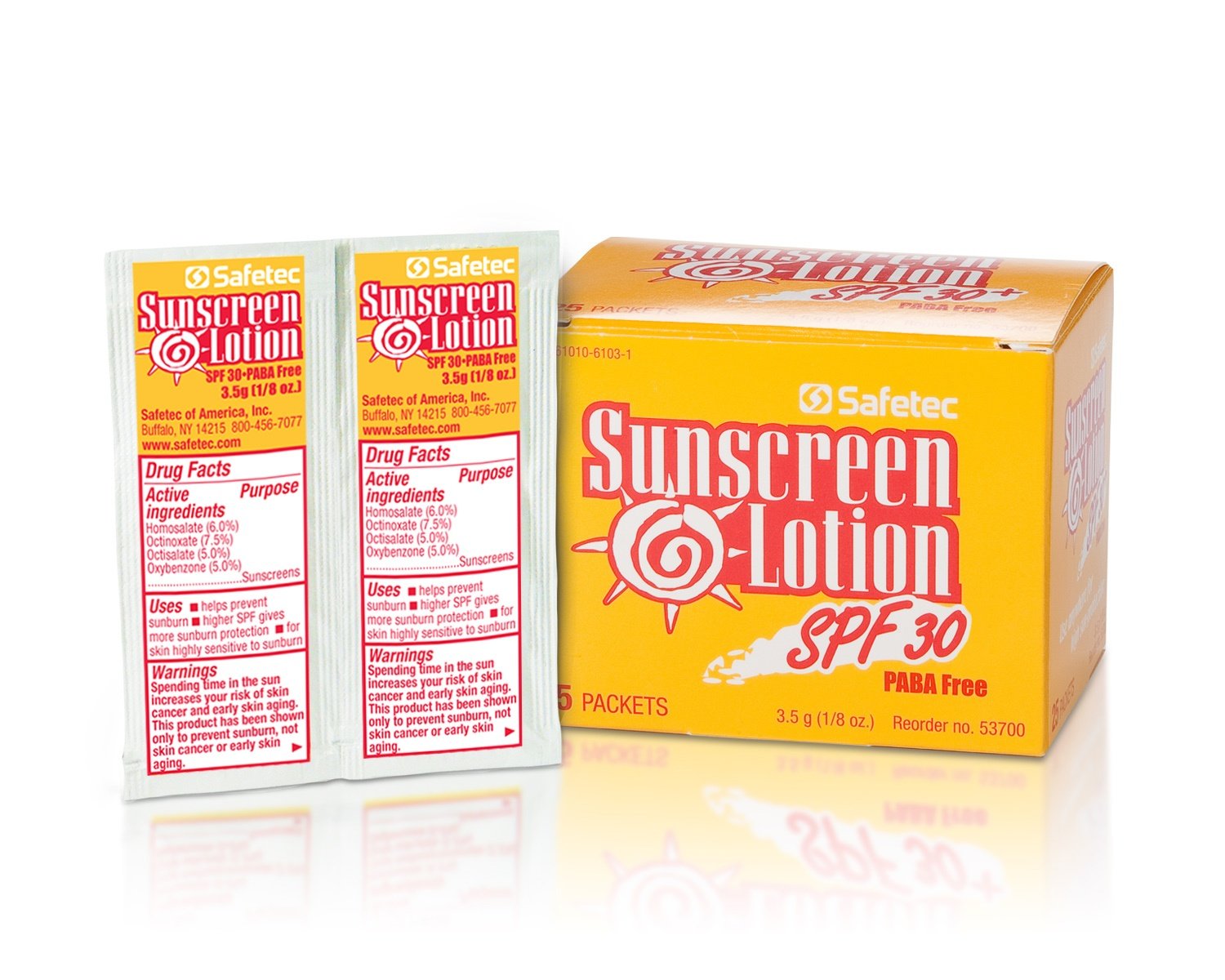
Don’t Skip The Sunscreen This Winter
Many people are unaware that even in the winter there is no lack of UV rays penetrating through the clouds onto our skin. These UV rays that cause aging and skin cancer do not change through the seasons. They are just as damaging in the winter as they are in the summer – even though you may not notice them as much in the winter weather.
What Can You Do?
Just because the temperatures are dropping, doesn’t mean that the sun is not shining. Make sure that your team is protected with sunscreen all year round.
Think about this fact: anyone can get skin cancer – regardless of age, gender, nationality. It is estimated that one in five Americans will develop skin cancer at some point in their lifetime.
If you are a person that works outdoors, your staff works outdoors, or you just love the outdoors in genera, it is important to be protected.
 The American Academy of Dermatology recommends everyone use sunscreen that offers the following:
The American Academy of Dermatology recommends everyone use sunscreen that offers the following:
- Broad-spectrum protection (protects against UVA and UVB rays)
- Sun Protection Factor (SPF) 30 or higher
- Water resistance
What is the magic number for SPF?
According to a number of sources SPF 30 is what you should be looking for when you purchase sunscreen. It gives you enough protection to be effective in a variety of environments. You should apply the sunscreen liberally at least 15 minutes before you expose yourself to direct sunlight.
Dr. Julia Tzu, a double board-certified dermatologist and founder of Wall Street Dermatology in New York, says: “Skin cancer formation and photoaging are correlated with cumulative UV exposure over one’s lifetime.”
What is the difference between low and high SPF?
According to the American Academy of Dermatology: Dermatologists recommend using a sunscreen with an SPF of at least 30, which blocks 97 percent of the sun’s rays. Higher-number SPFs block slightly more of the sun’s rays, but no sunscreen can block 100 percent of the sun’s rays. Currently, there is not any scientific evidence that indicates using a sunscreen with an SPF higher than 50 can protect you better than a sunscreen with an SPF of 50.
It is also important to remember that high-number SPFs last the same amount of time as low-number SPFs. A high-number SPF does not allow you to spend additional time outdoors without reapplication. All sunscreens should be applied approximately every two hours or according to time on the label, even on cloudy days, and after swimming or sweating.
Besides wearing sunscreen, how can you protect yourself from the sun?
There are a number of different ways to protect yourself including wearing a hat, sunglasses, sun protective clothing, drinking plenty of water and finding shelter when you can. Especially when the sun’s rays are the highest, between 11 am and 3 pm. Check out this awesome infographic all about the dangers of the sun, and how to practice safe sun.
Pregnant moms should also take extra precautions when working or spending time outside. Utilizing sunscreen regularly (as directed on the packaging) and not delaying reapplying when spending time in the sun. Taking some extra precautions to protect you and your baby is the most important thing you can do.
Be safe this winter – bundle up and don’t forget the sunscreen.
Sources: https://www.huffingtonpost.com/entry/sunscreen-winter-tips_us_563773e3e4b063179912e6d8
https://www.aad.org/media/stats/prevention-and-care/sunscreen-faqs
https://kayakguru.com/sun-protection-tips-outdoor-sports/
https://momlovesbest.com/tanning-during-pregnancy
